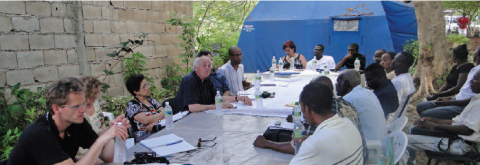
On January 12, 2010, Haiti was hit by a violent earth quake, which killed more than 200,000 people and caused significant damage to the country’s infrastructure. Countries around the world mobilized to provide emergency relief for the Haitian people and to help them rebuild. This aid was delivered to the people of Haiti by bilateral and multilateral development agencies and nongovernmental organizations. With infrastructure destroyed and communications and transportation systems limited, the Haitian government, already weak before the earthquake, was unable to coordinate the efforts of the thousands of organizations operating within its borders.
Three of these organizations — the Federation of Canadian Municipalities (FCM), the International Cooperation Agency of the Association of Netherlands Municipalities (VNG International), and Cités Unies France (CUF) — were committed to providing support to local governance in the Palmes region. In the spirit of the Paris Declaration on Aid Effectiveness (2005), they decided to harmonize their activities to provide greater collective efficiency. This case study outlines the findings of a study conducted in May 2013, which aimed to gain a better understanding of the strengths and challenges of this collaboration, and to find out what value was added in terms of results achieved.
Please use these links to find the case study in English or French.
